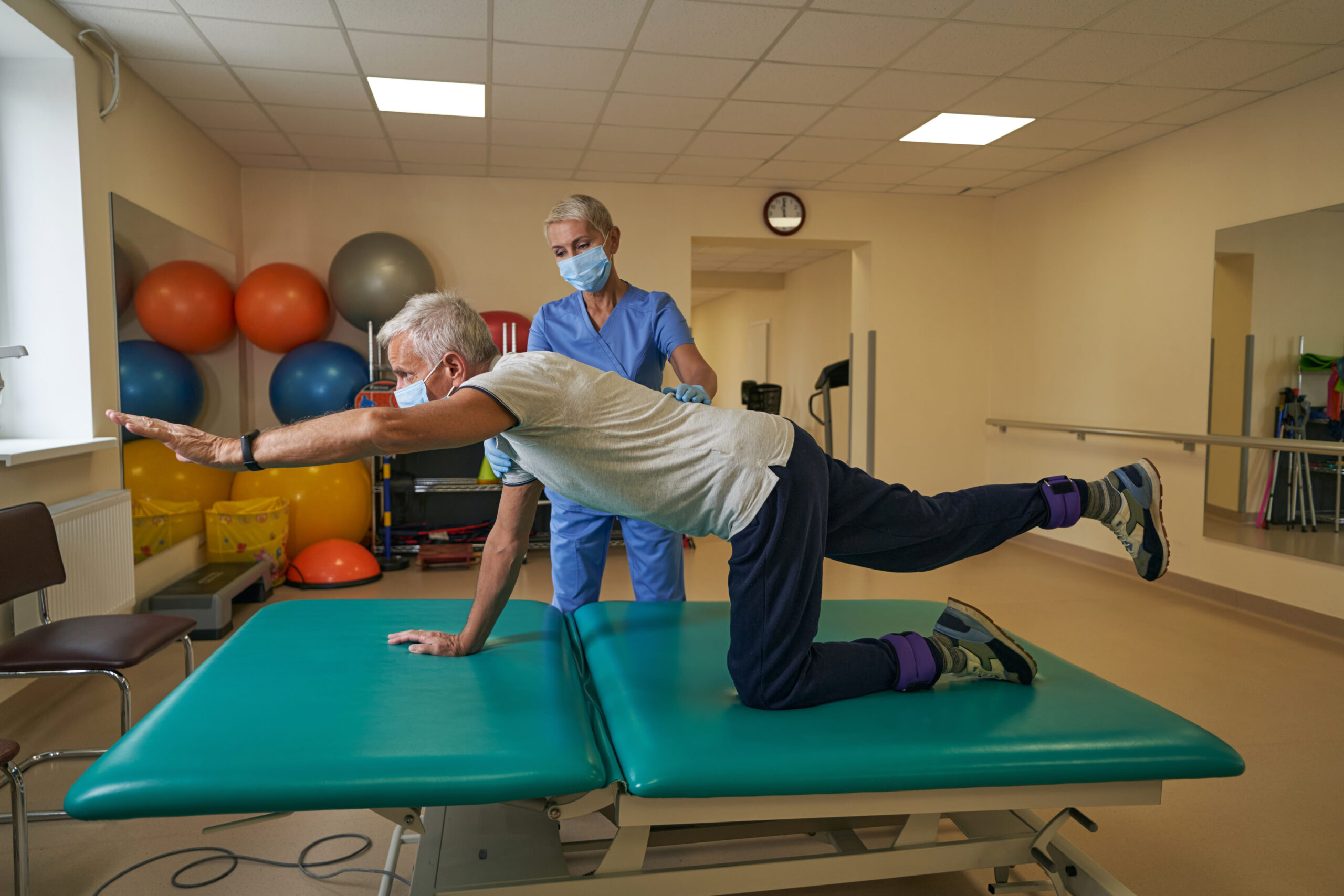Exercises and Rehabilitation for Spine Disc Herniation Recovery


Spine disc herniation has a range of treatment and recovery plans, ranging from more conservative and small-scale options to more intensive treatment. In many cases, specific exercises and rehabilitation will make the recovery effort the smoothest. As you assess your level of discomfort, consulting with a doctor can help you decide the best next steps for a full and relatively fast recovery.
A comprehensive spine center can help provide you with the resources you need for your spine disc herniation. Of course, sometimes spine disc herniations resolve on their own, without formal intervention. But other times, it can be helpful to start with a diagnosis via MRI, CT scan, or X-Ray. Once you have the formal diagnosis, you can talk to your doctor about using over-the-counter anti-inflammatories or a short course of oral steroids or muscle relaxants. At this point, it is also very common for doctors to recommend physical therapy.
A physical therapist can show you how to perform some relatively simple exercises safely, with an understanding of how much discomfort you should expect in the exercise, and when to stop so that you don’t exacerbate any issues. Resting on your belly with your head turned to one side is one example of a simple exercise that may be recommended. Your care team can also explain the benefits of gentle massage, ice and heat therapy.
Surgery can be an option in some cases. Again, one of the benefits of a comprehensive spine center is that you can get all of the medical opinions you need in one place – including getting connected to an experienced surgeon. In the case of spine disc herniation, a procedure called a discectomy can be an option when the patient is experiencing numbness or weakness that doesn’t go away with physical therapy. A discectomy is the removal of part of all of the disc.
In almost all cases, you will want to plan on a slow, gradual return to normal activity. That said, even in the case of surgery, it is very possible to make a full recovery in as short as a few weeks or just a couple of months.
You have discs in your spine in the first place to provide cushioning for your vertebrae. You can think of the discs as shock absorbers. The discs are composed of an outer layer called the annulus and an inner portion known as the nucleus. When part of the nucleus pushes out through the annulus, you have a spine disc herniation. Other common terms for the condition are bulged discs, slipped discs, and ruptured discs. Spine disc herniation causes pain because once the disc has slipped, it presses on spinal nerves.
You can suffer from a herniated disc for several reasons. Your disc may slip just from regular wear and tear, or you may have a specific injury that causes it. Discs weaken naturally as we age. So while an injury can cause a slipped disc at any age, it is more common for relatively small strains or minor movements to cause slippage as we get older.
Other risk factors for herniated discs include excess body weight, physically demanding jobs, genetics, smoking, and a sedentary lifestyle.
Spine disc herniation symptoms vary depending on the location of the slipped disc. In all cases, it’s common to experience sharp pain near the spine, muscle spasms near the spine, numbness or tingling in your arm or leg, and weakness in your arm or leg. (Usually one side of the body is affected.) However, a spine disc herniation can occur in any part of the spine, and your experience will likely differ accordingly.
If you have spine disc herniation in your lower back (known as the lumbar area), you will likely experience back pain as well as limb pain. This is where most spine disc herniations occur. Often, people describe this pain as a burning sensation. This is because of pressure on nerves that contribute to the sciatic nerve.
It’s also possible to have spine disc herniation closer to your neck, in the cervical part of your spine. In this scenario, you may experience either sharp or dull pain. The pain will be more in your neck than your back, and can radiate down your arm to your fingers.
Spinal disc herniation can be a stressful experience, not only because of the pain that comes with it, but because it can often happen without a dramatic injury. The good news? Exercises and rehabilitation are accessible treatment options that can unlock a full recovery. Your doctor and physical therapist will be able to assess the location of your slipped disc and recommend medication, physical therapy, and other specific next steps that make sense in your case.